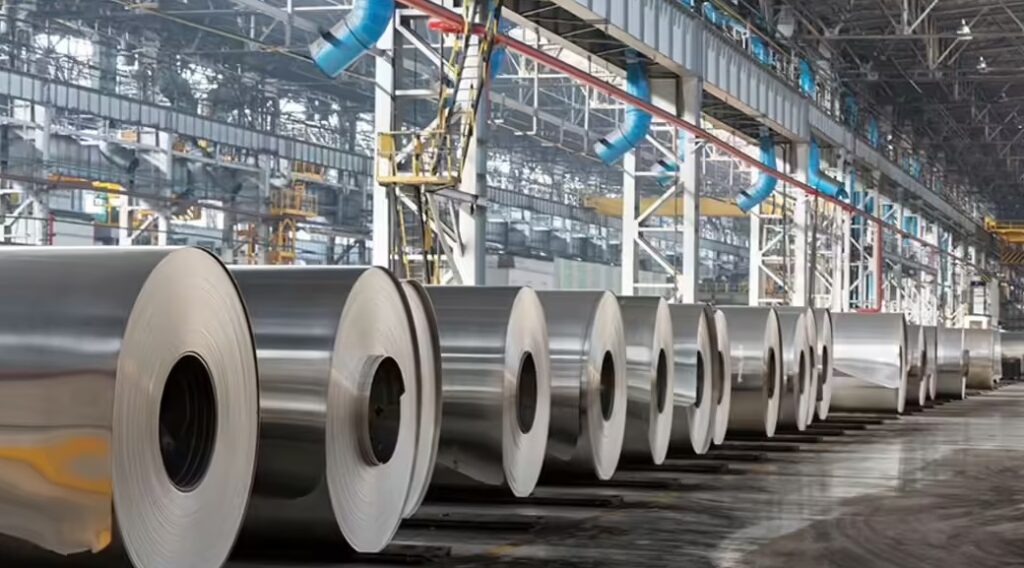Environmental consciousness has become a driving force in modern manufacturing, and the aluminium extrusion industry stands at the forefront of sustainable production practices. As businesses increasingly prioritize environmental responsibility alongside operational efficiency, understanding the sustainability advantages of aluminium extrusion becomes crucial for informed manufacturing decisions.
The Environmental Profile of Aluminium
Aluminium’s environmental credentials stem from its unique combination of properties and lifecycle characteristics. While primary aluminium production requires significant energy input, the material’s exceptional recyclability fundamentally transforms its environmental impact over time. Unlike many materials that degrade with recycling, aluminium can be recycled indefinitely without losing its essential properties.
The recycling process for aluminium requires only about 5% of the energy needed for primary production, making recycled aluminium one of the most energy-efficient materials available. This dramatic energy reduction translates directly into reduced carbon emissions and environmental impact for products utilizing recycled content.
Current recycling rates for aluminium exceed 90% in many applications, with the material often being recycled multiple times throughout its lifecycle. This high recycling rate, combined with aluminium’s durability and longevity in use, creates a compelling environmental profile that continues to improve as recycling infrastructure develops.
Sustainable Extrusion Processes
Modern aluminium extrusion facilities have implemented numerous sustainability initiatives that significantly reduce environmental impact while maintaining production efficiency. Energy management systems optimize heating processes, reducing both energy consumption and greenhouse gas emissions. Advanced furnace designs and heat recovery systems capture and reuse thermal energy that would otherwise be lost.
Water conservation measures in extrusion facilities include closed-loop cooling systems and advanced water treatment technologies. These systems minimize water consumption while ensuring that any discharged water meets or exceeds environmental standards. The reduction in water usage also decreases the environmental impact of facilities, particularly in water-stressed regions.
Waste reduction strategies focus on maximizing material utilization throughout the extrusion process. Advanced billet optimization techniques minimize scrap generation, while sophisticated process controls ensure consistent quality that reduces reject rates. Any waste material generated during extrusion is typically recycled back into the production stream, minimizing overall material waste.
Lifecycle Assessment Benefits
Comprehensive lifecycle assessments of aluminium extrusion products consistently demonstrate favorable environmental profiles compared to alternative materials and manufacturing processes. The combination of material efficiency, production optimization, and end-of-life recyclability creates environmental benefits that compound over time.
Transportation considerations further enhance aluminium’s environmental profile. The material’s exceptional strength-to-weight ratio means that aluminium components often weigh significantly less than alternatives, reducing transportation fuel consumption and associated emissions throughout the supply chain.
Product longevity represents another crucial environmental advantage. Aluminium’s natural corrosion resistance and structural durability mean that products incorporating aluminium extrusions typically have extended service lives. This longevity reduces replacement frequency and associated environmental impacts over time.
Circular Economy Integration
Aluminium extrusion aligns exceptionally well with circular economy principles, where materials are kept in use for as long as possible and then recovered and regenerated at the end of their service life. The material’s recyclability enables true circular material flows that minimize waste and maximize resource efficiency.
Design for circularity principles can be effectively implemented in aluminium extrusion projects. Profiles can be designed for easy disassembly and material separation at end-of-life, facilitating efficient recycling. Connection methods that avoid material contamination help maintain aluminium purity for high-quality recycling.
Regional recycling networks for aluminium continue to expand, making end-of-life material recovery increasingly accessible and cost-effective. These networks create local economic value while reducing transportation requirements for recycling operations.
Carbon Footprint Optimization
Carbon footprint reduction strategies in aluminium extrusion encompass both direct production impacts and indirect benefits throughout product lifecycles. Production facilities increasingly utilize renewable energy sources to reduce scope 2 emissions, with some facilities achieving carbon-neutral or even carbon-negative operations.
The carbon payback period for aluminium extrusion products is often remarkably short due to the material’s performance characteristics. In applications where aluminium enables weight reduction, energy savings during product use often offset production emissions within months or years of operation.
For companies committed to comprehensive sustainability programs, suppliers like Aluminium Profile can provide detailed environmental impact documentation and support for sustainable sourcing initiatives, helping businesses meet their environmental goals while maintaining operational efficiency.
Innovation in Sustainable Practices
Technological innovations continue to improve the sustainability profile of aluminium extrusion. Advanced alloy development focuses on creating materials with enhanced performance characteristics that enable further lightweighting and efficiency improvements in end applications.
Process innovations include more efficient heating systems, improved die technologies that reduce energy requirements, and advanced quality control systems that minimize waste generation. These technological advances consistently reduce the environmental impact of extrusion operations while often improving production efficiency.
Digital technologies are enabling more sophisticated optimization of extrusion processes. Advanced modeling and simulation tools help optimize production parameters to minimize energy consumption while maintaining quality standards. Real-time monitoring systems enable immediate adjustments to maintain optimal efficiency.
Regulatory Compliance and Standards
Environmental regulations continue to evolve, with increasing focus on lifecycle impacts and circular economy principles. The aluminium extrusion industry’s proactive approach to sustainability positions it well for compliance with emerging regulations while often exceeding minimum requirements.
International standards for environmental management systems provide frameworks for continuous improvement in sustainability performance. Many extrusion facilities have implemented ISO 14001 environmental management systems that systematically address environmental impacts and drive ongoing improvements.
Carbon accounting and reporting requirements are becoming more sophisticated, with detailed tracking of scope 1, 2, and 3 emissions. The aluminium industry’s comprehensive data collection and reporting capabilities support accurate carbon accounting that enables informed decision-making.
Economic Benefits of Sustainability
Sustainable practices in aluminium extrusion often deliver direct economic benefits alongside environmental improvements. Energy efficiency improvements reduce operational costs, while waste reduction initiatives minimize material costs and disposal expenses.
Market demand for sustainable products continues to grow, with many customers willing to pay premiums for environmentally responsible solutions. Companies that can demonstrate superior environmental performance often gain competitive advantages in bidding processes and customer relationships.
Long-term cost benefits include reduced regulatory compliance costs, lower resource costs through efficiency improvements, and reduced exposure to volatile primary material markets through increased recycling utilization.
The integration of sustainability principles into aluminium extrusion operations represents both an environmental imperative and a business opportunity, enabling companies to reduce their environmental impact while often improving operational efficiency and market competitiveness.

